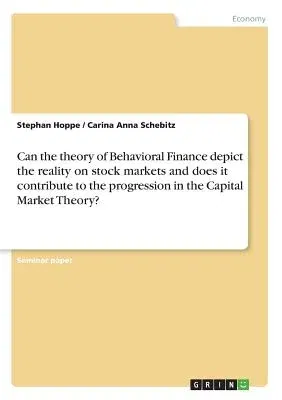Seminar paper from the year 2015 in the subject Business economics -
Investment and Finance, grade: 1,7, University of Applied Sciences
Essen, language: English, abstract: "The Portfolio Theory" by Harry
Markowitz, the "Capital Asset Pricing Model" by William Sharpe and the
concept of the "Homo Oeconomicus" of Adam Smith - all of these models
that are taught to business students and referred to by financial
specialists all over the world are based on the assumption of the
fundamental efficiency of markets. Market analysts build their
substantial economic and financial predictions on the supposition that
investors and corporations always behave and decide rationally.
Consequently there would not be a chance that manias, panics or crashes
ever occur. Nevertheless there were various speculation bubbles in the
past such as the 1929 Stock-market-crash, the Dot-com bubble starting
1997 and the US-Subprime crisis as of 2007. So stock prices show
fluctuations that cannot be only elucidated by economic factors.
Moreover there are studies that come to the conclusion that there is
only a low correlation between share prices and fundamental data.
Concomitant new research approaches deployed that either developed the
existing models further or even created a complete paradigmatic change.
Nowadays when it comes to explaining the occurrences on the stock
markets the field of psychology and the behavioral science gain in
relevance. However the following question arises: Can the theory of
Behavioral Finance depict the reality on stock markets and its
participants and does it make a contribution for the progression in the
Capital Market Theory? Yet there are some approaches that attempted to
answer this question but there is no scientific consensus about it.
Hence this term paper should accomplish a concise but fundamental
contribution for the contemplation of this topic.


